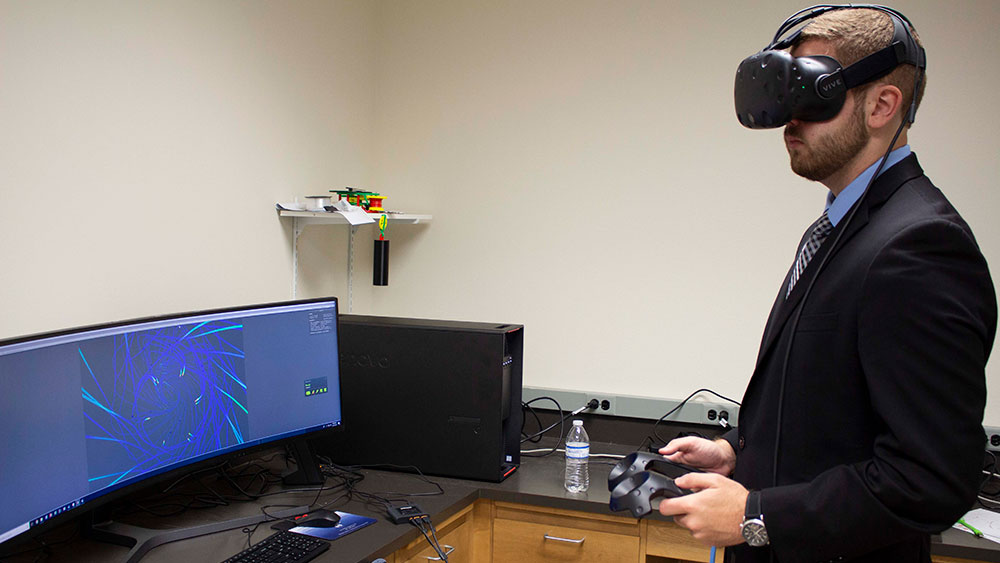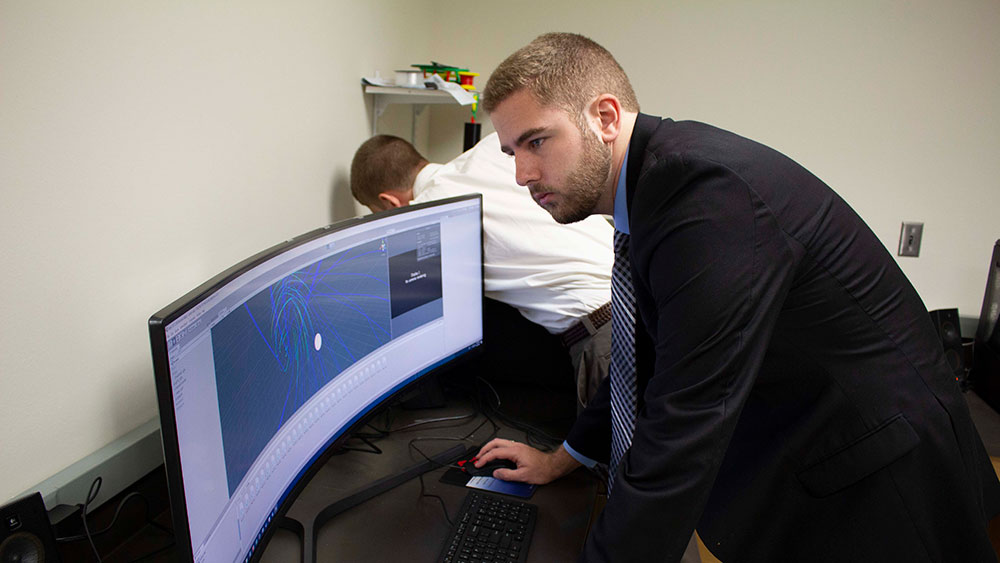
What started as a programming hobby for after class has turned into a major research project for Texas A&M University seniors Justin McGinnity and Cody Piercey.
“We’re bridging the gap between mechanical engineering and computer science,” said Piercey, industrial distribution engineering major with a computer science minor. “You can take the mechanical engineering perspective that professors have to offer and then try to do that in our programming.”
The two began working on programming during their sophomore year on their personal laptops. They started working in augmented reality (AR) and virtual reality (VR) software, and were lent an Oculus Rift VR headset by Dr. Tanil Ozkan, assistant professor of instruction in the J. Mike Walker ’66 Department of Mechanical Engineering. McGinnity, a mechanical engineering major with a computer science minor, said the two had never done work in

“The VR space is untapped, so no one had really developed anything in virtual reality yet,” McGinnity said. “Anytime we do something, we’re the first ones to do this. It feels good to know you’re this pioneer in a VR space.”
Ozkan gave them their first project: develop 3D models of molecular atomic structures, which would help students better visualize the structures by being able to move around them in a virtual space.
From the molecular models, McGinnity and Piercey branched out to finite element analysis, which allows researchers to gain valuable insight of their study through VR. Piercey said they were able to develop several stress studies within the program that researchers can view from all angles. They’ve also reached out to professors to see what else they would like to use the software for.
“We’re not experts, we’re programmers, and so we ask what engineers want to see this software be able to do. What would help them in VR?” McGinnity said.
As the two started and have grown their project, they drew the attention of Mitch Wittneben, associate director of Information Technology (IT) for the College of Engineering, who met and hired the students in April 2017 to work for IT.

The students were then supplied with sponsored equipment. So far they are sponsored by computer manufacturing company Lenovo and supported by software company ANSYS, who have donated equipment and provided projects to McGinnity and Piercey.
“We hire student workers and give them professional development experience in areas that they are truly interested in,” Wittneben said.
As they develop their skills in the different virtual systems, McGinnity and Piercey have learned to write their own algorithms to convert data from a 2D to 3D space, and even add color to their models.
“We’re still definitely learning a lot,” Piercey said. “I feel like I don’t know even close to what I would need to know in the software, but it’s a learning process.”
Looking forward, both students said they hope the programs they develop will one day help further education in the classroom.
“If students are doing these studies, we want them to have a way to view their results in VR,” McGinnity said. “No one really has a way of doing that yet that’s universal and accepts all kinds of file formats, so that’s kind of our goal is to be able to standardize that and make it accessible to A&M students.”